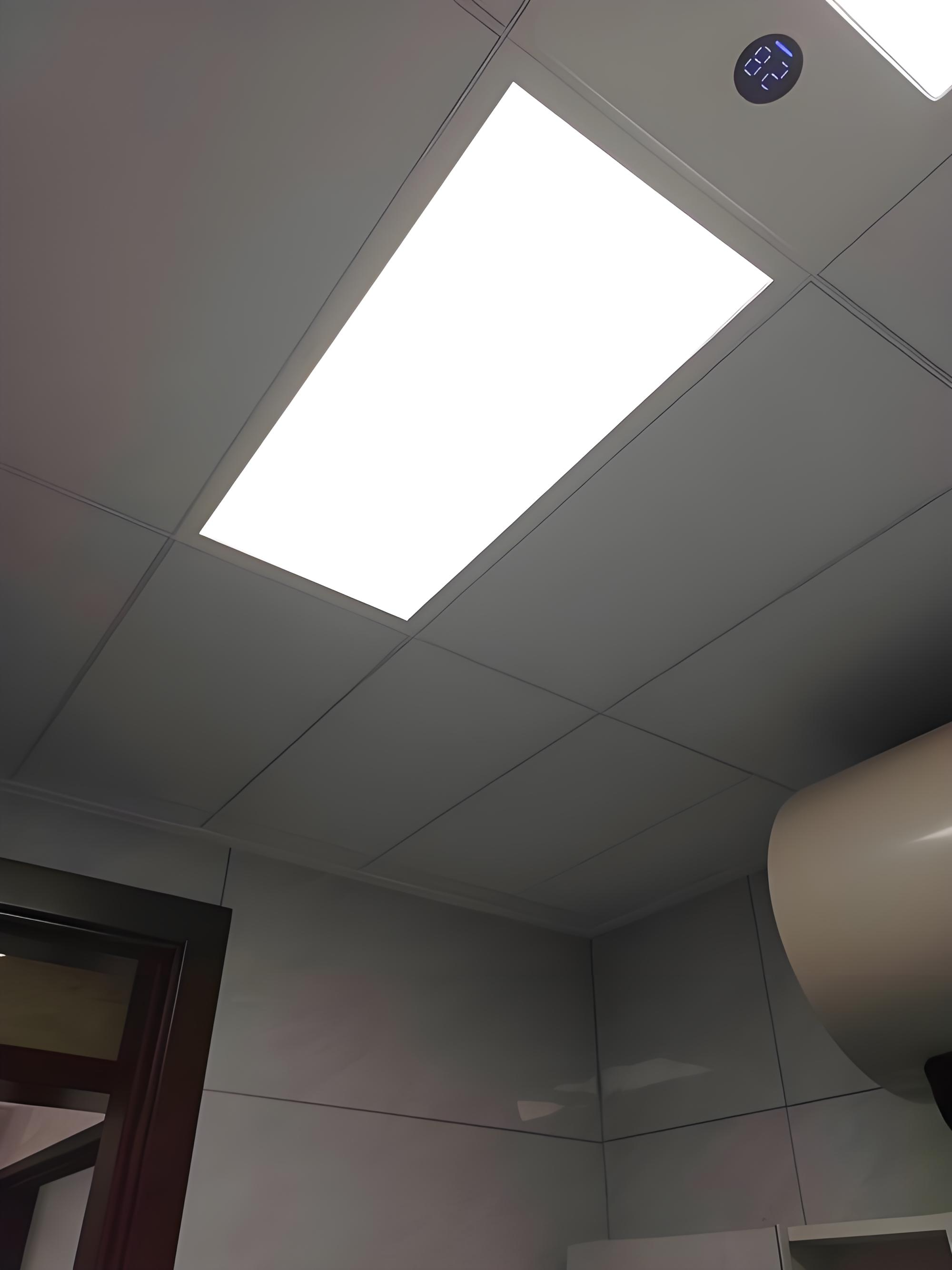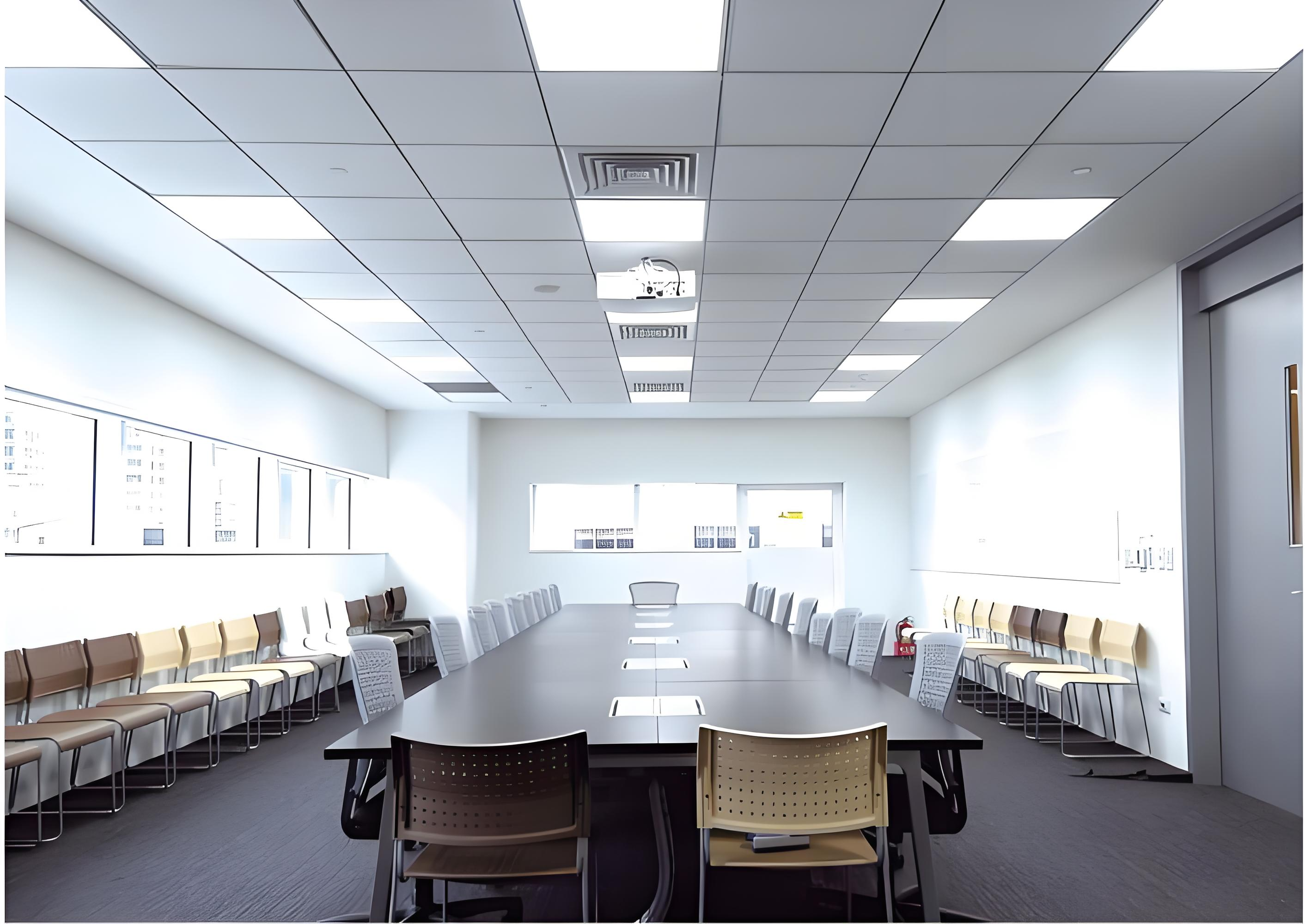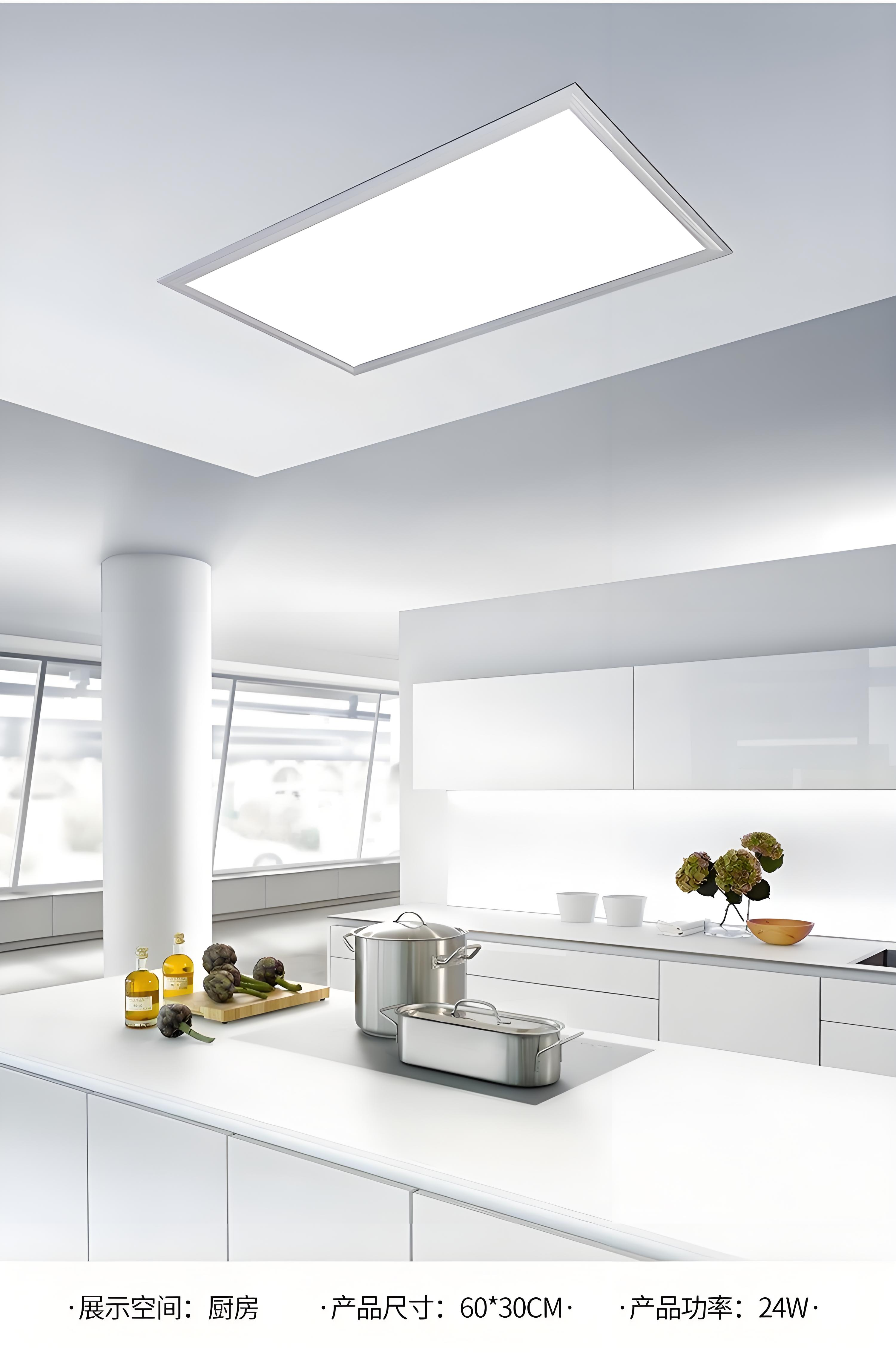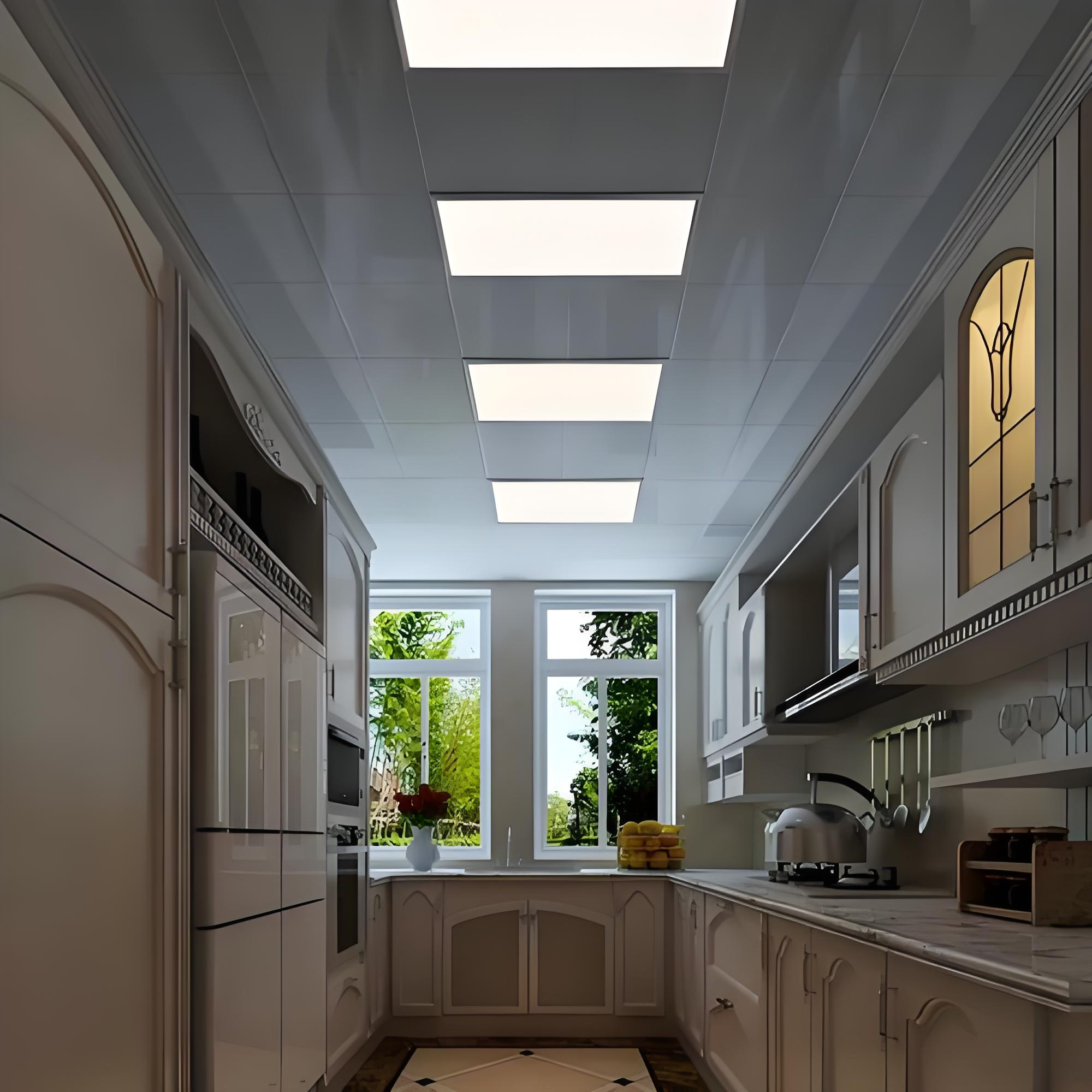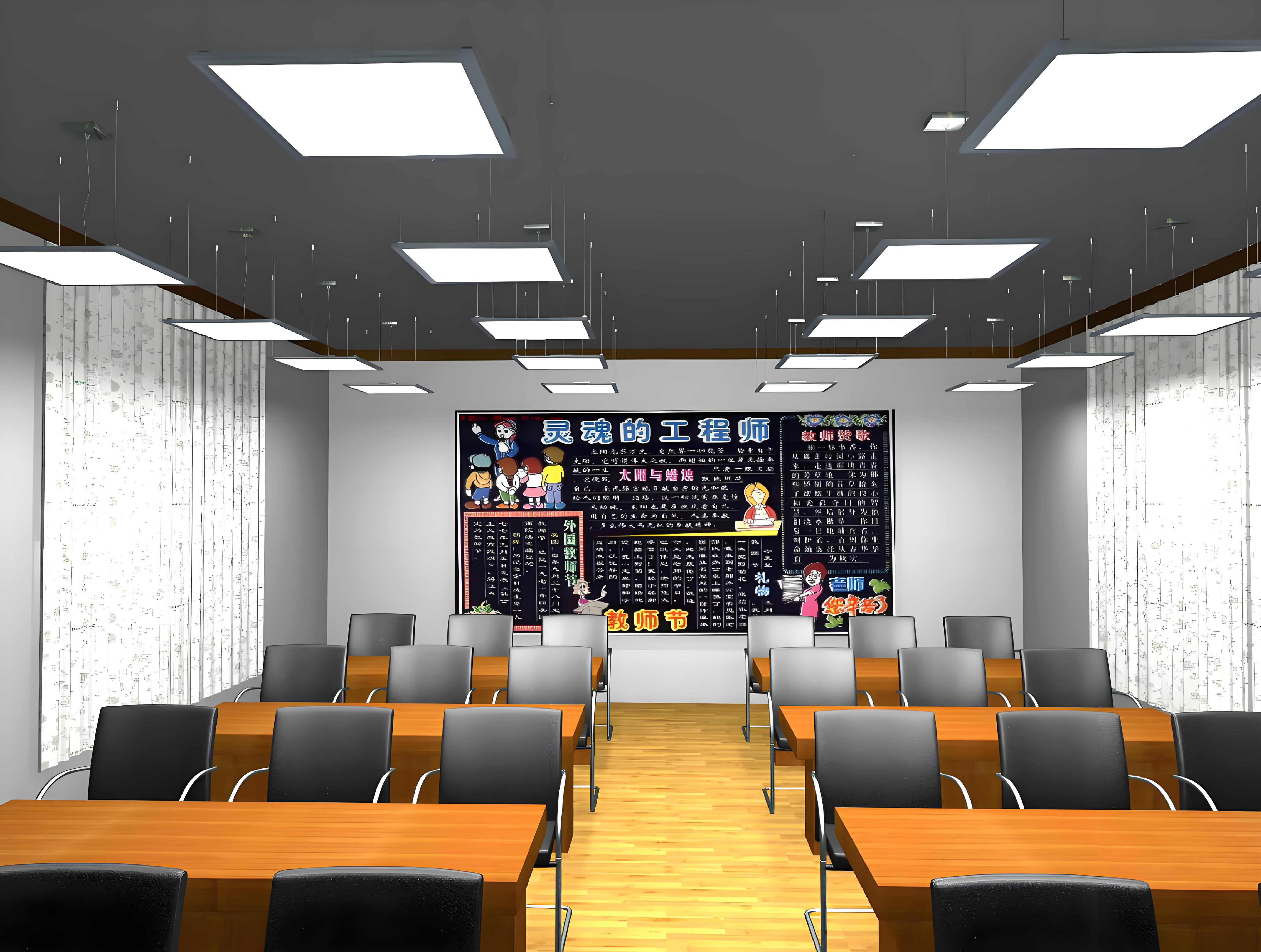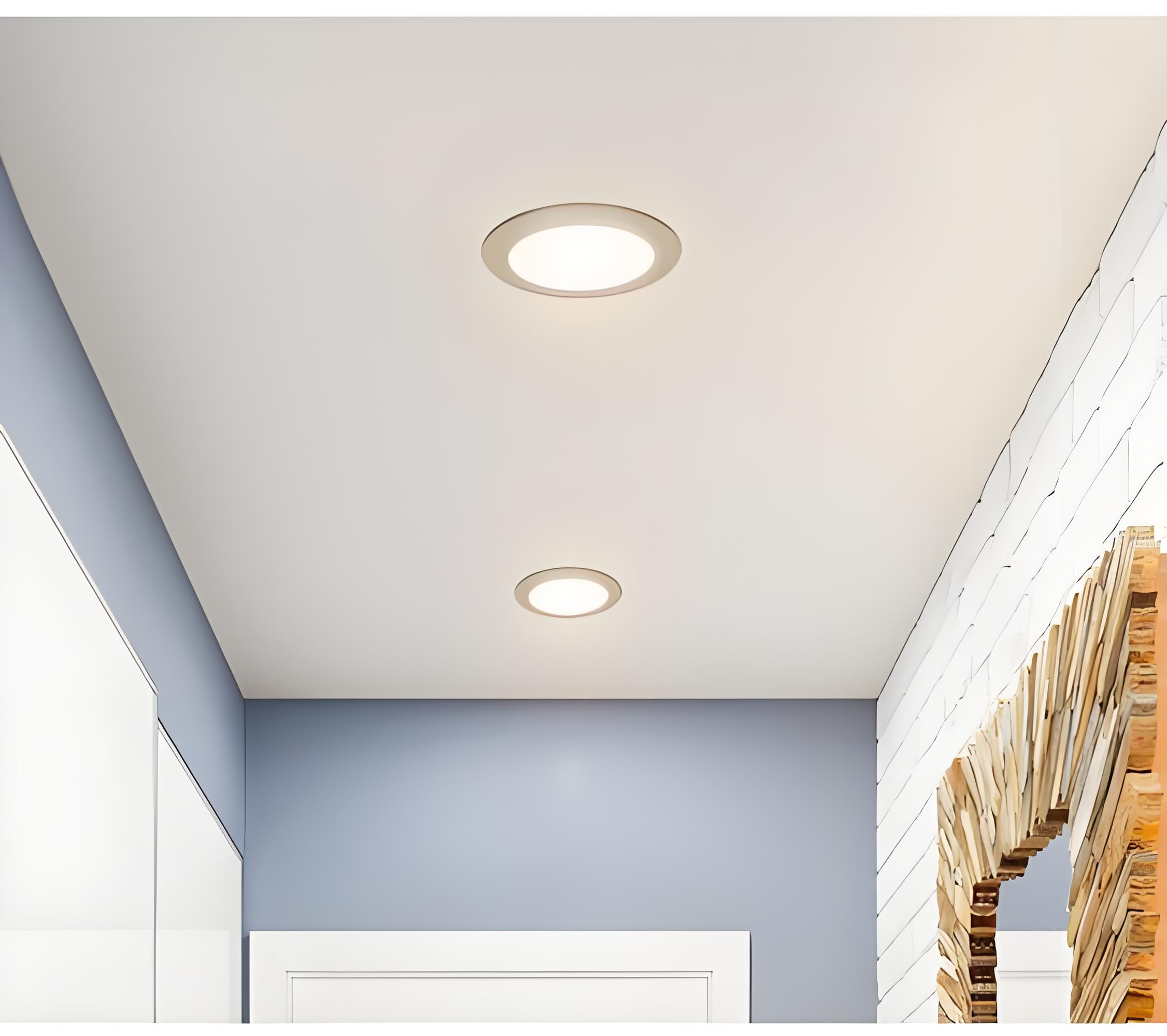With the advancement of global energy conservation and emission reduction policies and the maturity of smart lighting technology, the LED panel light market is experiencing a new wave of growth. The continued penetration of the commercial sector and the rapid expansion of the home market are jointly driving the development of this lighting segment. This article will deeply analyze the main driving factors, challenges, and future development trends of the LED panel light market in the two major application scenarios of commercial and home.
Commercial demand: the core driving force for steady growth
The commercial LED panel light market has become a mainstay of the industry, projected to expand at a compound annual growth rate of 3.9% from 2025 to 2031, with the market size projected to grow from US$863 million in 2024 to US$1.128 billion in 2031. This growth is primarily driven by strong demand across four major application scenarios: office, retail, healthcare, and education.
In the office lighting sector, LED panel lights, with their uniform light distribution, low glare, and significant energy savings (50%-70% compared to traditional lighting), have become the preferred solution for modern office environments. The need for long-term working lighting has prompted companies to prioritize employee visual comfort, and LED panel lights offer an ergonomic lighting environment that reduces visual fatigue and improves work efficiency.
Medical lighting places even higher demands on LED panel lights, including high color rendering (Ra ≥ 85), flicker-free operation, easy cleanability, and antibacterial properties. The demand for precise lighting control in spaces such as hospital operating rooms, wards, and examination rooms has driven the development of high-end medical-specific LED panel lights. The implementation of the new energy efficiency standard GB38450-2019 has raised the luminous efficiency threshold for medical lighting products to ≥120 lm/W (Class 1 efficiency), accelerating the elimination of inefficient products.
Retail and educational institutions also saw strong demand. Retail venues are leveraging the high color rendering and adjustable color temperature features of LED panel lights to enhance product display, while schools are protecting students' eyesight with classroom lighting that meets health standards. Intelligent control systems can also automatically adjust lighting modes based on teaching needs.
Home Application Market: The Rise of Emerging Growth Points
Compared to the mature commercial market, demand for residential LED panel lights has developed later, but its growth potential is significant. With rising living standards and evolving consumer preferences, homeowners' demands for higher-quality indoor lighting are increasing, driving LED panel lights to rapidly penetrate the residential lighting market, gradually replacing traditional lighting products.
Popular home designs such as modern minimalist and Nordic styles emphasize a sense of cleanliness and spaciousness, and ultra-thin LED panel lights (thickness ≤ 30mm) perfectly align with this aesthetic trend. Recessed or ceiling-mounted installation options maximize ceiling cleanliness, making them particularly suitable for smaller homes. Furthermore, LED panel lights' adjustable brightness and color temperature meet the personalized needs of homeowners, making them a key component of the smart home ecosystem.
The growing awareness of healthy lighting is further stimulating market demand. LED panel lights that reduce blue light hazards and are flicker-free are gaining popularity among parents and health-conscious individuals. Research has shown that high-quality LED panel lights provide a spectral distribution that mimics natural light, minimizing adverse effects on the human body, especially in spaces used for extended periods, such as children's rooms and study rooms. The emerging "solar-like spectrum" technology accurately simulates the sunlight spectrum to provide users with a more natural and comfortable lighting experience. The average annual growth rate in the Chinese market is expected to exceed 35% from 2024 to 2027.
Market Opportunities: Technological Innovation and Policy Dividends
The LED panel light market is experiencing multiple development opportunities. The continued advancement of energy-saving and environmental protection policies constitutes the most fundamental long-term growth driver. China's "dual carbon" goals and green building policies explicitly require public building lighting to increase energy efficiency by at least 20%. LED panel lights, with their 50%-70% energy savings compared to traditional lighting, significantly benefit from this trend.
The integration of smart lighting technologies brings high added value to products. By integrating with IoT and AI technologies, smart LED panel light systems can implement advanced features such as remote control, scene adjustment, and occupancy sensing. In the commercial sector, such systems can automatically adjust brightness and on/off status based on occupant activity; in the home, personalized control is achieved through mobile apps or voice assistants. The global smart lighting market is expected to reach US$22.98 billion in 2025, with smart panel lights being a key component. The average price of these products is 30%-50% higher than that of traditional lamps.
The urbanization process in emerging economies provides ample room for market expansion. Developing countries in Asia Pacific, Latin America, the Middle East, and Africa are experiencing rapid urbanization, and the construction of numerous commercial buildings and residential projects has created a huge demand for lighting. In China, India, and Southeast Asian countries in particular, urban population growth and the expansion of the middle class are driving an upgrade in lighting consumption.
Industry Challenges: Intensified Competition and Lack of Standards
Despite its promising prospects, the LED panel light market still faces numerous challenges. Price competition is intensifying, and adjustments in the global supply chain are leading to continued expansion of production capacity. In the Chinese market, local brands such as Opple Lighting and Foshan Lighting are expanding their market share through cost-effectiveness, leading to increasingly fierce competition between domestic and international brands.
Inconsistent technical standards hinder the healthy development of the industry. In emerging areas such as the solar spectrum, the lack of unified technical definitions and testing standards has led to a mixed market and a flood of low-quality products. Manufacturers arbitrarily tout marketing terms such as "full spectrum" and "close to natural light" while failing to meet actual performance standards, undermining consumer trust and the long-term development of the market.
Fluctuating raw material costs are creating operational pressure. Rare earth elements, key materials in LED production, have a direct impact on product costs due to price fluctuations. Leading companies are addressing this challenge through vertical integration and diversified sourcing strategies, such as establishing a reserve pool of rare earth permanent magnet materials. At the same time, the new energy efficiency standard requires that the heat dissipation material be upgraded from the traditional aluminum substrate to the graphene composite phase change material, and the thermal resistance needs to be reduced from 2.5℃/W to 0.8℃/W, which puts higher demands on the company's technological upgrade.
Future Outlook: Parallel Development of Intelligence and Health
Looking ahead, the LED panel light industry will exhibit two core trends: intelligent and ecological, and healthy and green. Smart lighting systems will expand from single products to whole-home intelligence, deeply integrating with smart city infrastructure. Adaptive lighting solutions that sense human activity, launched by technology companies such as Huawei and Xiaomi, represent this development direction.
Healthy lighting will become a new benchmark for brand competition. Demand for eye-protection lamps, antibacterial materials, and photobiomodulation technology is surging, and the healthy lighting market share is expected to increase by 15% year-on-year. UV LED sterilization technology and dynamic lighting solutions that align with human circadian rhythms may become the next technological trends.
Key Data and Trends of LED Panel Light Market
Target | Current Status/Forecast | Growth Drivers | Key Challenges |
Commercial Market | $863 million in 2024 and $1.128 billion in 2031 (CAGR 3.9%) | Office, medical, retail, and education needs | Price competition and product homogeneity |
Home Application Market Penetration | The global panel light market will reach $54.705 billion in 2025 | Changes in decoration styles and increased health awareness | High price sensitivity and installation threshold |
Proportion of Smart Lighting | Smart lighting market to reach $22.98 billion in 2025 | Integration of IoT and AI technologies | Inconsistent standards and interoperability issues |
Energy Efficiency Requirements | Level 1 energy efficiency ≥120lm/W, Level 3 energy efficiency ≥90lm/W | Policy-driven, cost-saving | Technology upgrade pressure and material costs |
Conclusion
the LED panel light market is at a critical stage of transformation. The commercial sector will continue to maintain steady growth, while the residential market is expected to expand even faster. To stand out in this fierce competition, companies must continuously innovate in intelligent and health-conscious design while proactively addressing the challenges of rising standards and cost control. With the deepening global green transformation and digitalization, the LED panel light market holds broad prospects. However, only companies with leading technology and superior quality will be able to remain victorious in this industry reshuffle.




